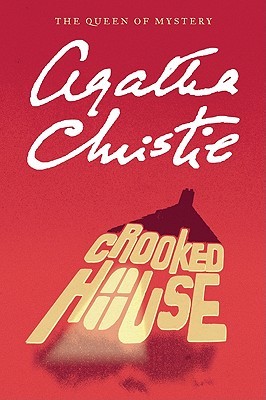Crooked House, The ABC Murders, and At Bertram's Hotel: A Triptych of Agatha Christie
Isn’t there just something so quaint about Agatha Christie? You may have read Murder on the Orient Express or And Then There Were None when you were young—almost everyone who partakes of the occasional whodunit has come across one or both of these—but according to her website, Agatha Christie wrote approximately sixty-six thousand other novels. Now, I may be off by a couple zeroes there, but really, there’s a reason this woman is known as the Queen of Crime.
So, I’ll admit it now, if you haven’t already guessed: I’ve been on a Christie kick. When I was in London for work last month, I had the pleasure of seeing The Mousetrap, the world’s longest-running play, and it was everything I hoped it would be. There was nothing spectacular or flashy about it. The set was stationary; no one revolted on any spinning barricades or opened any underground lairs filled with moats and smoke machines. It was just a cast of characters, a group of misfits with something surprising in common, all staying at a newly-opened bed and breakfast during a horrible snowstorm with a killer on the loose. It was perfect. It reminded me of the movie Clue (which I definitely haven’t seen hundreds of times).
Even after seeing the play and reading three Agatha Christie novels in under two weeks (Crooked House, The ABC Murders, and At Bertram’s Hotel), I still feel utterly tickled by the classic whodunit. I love the charming, iconic detective character (perhaps with his perfect little moustaches or her quiet, observational style). I love the setup and the denouement. But what I love most about all three of these books (and the play, and Christie’s two best-known works) is that they rely so heavily upon a collection of suspicious characters, any of whom have the means, motive, and opportunity to be the villain.
Crooked House in particular of these three recent reads allowed me to best relive that perfect mystery experience. The main character is not either of Christie’s famous detectives (Poirot or Miss Marple), so in a way, this draws the reader further into the mystery of the situation. The narrator is a man who wishes to marry a lovely young woman, but this woman’s elderly grandfather has just been poisoned, apparently by his much younger wife. The entire family wants to believe it’s the widow who has committed the crime, but the narrator gets the feeling that this might just be wishful thinking. So as both an insider and an outsider to the family, the narrator does a little investigation of his own and discovers that, as his fiancée puts it, every single member of the crooked little family is, in their own way, “ruthless.”
The ABC Murders, on the other hand, is the kind of book that makes you want to leap up from your armchair with a magnifying glass and yell, “There’s murder afoot!” In The ABC Murders, famed detective Hercule Poirot receives a letter announcing a sinister event that will happen in Andover on a particular date and challenging Poirot to stop it. As a clever reader might anticipate from the title, this is the start of a series of alphabetical murders: Ascher in Andover, Barnard in Bexhill, etc., each one occurring before the detective can do anything to prevent the crime from happening. The route to the solution of the alphabet murders is, ironically, in numbers: the loved ones of the deceased band together to help Poirot track down the serial killer—a man who may just have ties to one of them.
At Bertram’s Hotel holds the particular beauty of being more than it seems. In fact, I found the first half of the novel almost dull in its straightforwardness. So much time was spent introducing characters without any hint of a crime: a wealthy actress, her boarding school daughter, a clergyman, a racecar driver—all of them together (or around) Bertram’s Hotel, a perfectly adorable old-fashioned place to stay and enjoy the luxuries and nostalgia of days past. What these seemingly disconnected set of characters don’t realize is that while they think they’re alone, the unimposing Miss Marple is witness to more than they’d like her to know.
In each of these three novels, the characters are what make the mystery special. Christie is careful about releasing just the right amount of information to lay suspicion on each person without tipping the scales too much in favor of an obvious red herring. And although the character may conform too much to certain archetypes or fill stereotypical roles within the story, their backstories are well-planned and their motives duly considered. More importantly still is the way Christie weaves the connections together—there is often more than one person involved in the crime, and many others who, in sharing what they know, can discover the truth. It is truly the character web that manages to trap the criminal.
So, are Christie’s works as monumental and prominent as other great classical literature? No, probably not. But are they a little twisted, fun, clever, and often surprisingly original? Absolutely. Agatha Christie’s books are never a strain to read, but they do force the rusty problem-solving gears in your brain to oil up and get turning. And perhaps they might make you just a little more perceptive and skeptical of the people around you.
Because if there’s anything I learned from Dame Agatha, it’s that whenever you get a group of idiosyncratic people together (be they members of a fractured family, guests at a hotel, or passengers on a train), there will be at least one murder, and the killer will be among them.
Good luck at your next big family gathering!
TL;DR: In each of these novels, a large cast of characters is drawn into a mystery when someone close to them is murdered. Wow, I summed up three books with one tagline. Is that a bad thing?

